- Home
- Ray Bradbury
Bradbury Speaks Page 5
Bradbury Speaks Read online
Page 5
We’ve got to put a brain back inside all of our technological fireworks. It’s not enough to have e-mail and the Internet and digital recordings and all the things that lure us to behave like lemmings rushing to a distant sea. The brain that we have to put back in the center of our fireworks is the intent of humanity to survive by higher means, which has to do with the planet Mars, to refocus ourselves not on things closer to Earth, fireworks circling the planet, but on the far aspects of the Red Planet itself. If we could do this for only five minutes out of an hour, we could turn away from some of the most wonderful things that are busy summoning our attention at this time.
We have been given the gift of life but have forgotten to say thanks. Perhaps because we are confused about to whom or to what we should give this thanks. We know that we should pay back but can find no recognizable recipient for our gratitude, which leaves us with the unease of guilt; Christmas children who, late on in the Yuletide afternoon, think all the presents have been opened.
All this because we are at the halfway point in our long overland skyborne trek, our search for our promised selves.
We are weary with travel, we are confused by our prejudices, we are terrified by our hatreds and the impulse to destroy or self-destroy.
Say it again:
Too soon from the cave, too far from the stars.
We yearn to step free of the cave, we long to conquer space and deliver ourselves to the Cosmos.
So the next present to be opened on a never-ending Christmas is Mars.
QUESTION: Can this really be so?
ANSWER: As the Arabian philosophers once said, It is written.
After a lecture recently, a young man stepped up, holding his baby in his arms. “Mr. Bradbury,” he said, “shall I tell you the dream I have for my grandchildren and you?”
“Tell,” I said.
“I’m in training to become an astronaut with Mars as prime destination,” he said. “Many years from now, when we have our first colony on Mars and I am there with my family in the middle of the night, one night, with Mars a desolation and dead, I’ll wake because of a sound and go into my ten-year-old grandson’s area of our smallish hut and bend down over the heaped sheets and blankets and quietly pull them aside. Underneath, what do you think I hope to find? My grandson, with a flashlight, reading a book late at night, against orders. Startled, he looks up at me. What are you reading? I say. The Martian Chronicles, he says. He turns the flashlight off. Turn it back on, I say. Okay? he says. Okay, I say. He turns the flashlight back on. Slowly I pull the sheet back up over him. I can see the light dimly under the covers. June 2033, I hear him whisper. I turn and walk away, blinded by tears. Is that okay, Mr. Bradbury?”
I cannot speak. I grab and hold the young astronaut, tears in my eyes.
At last I say, Okay.
And suddenly I am an ancient Greek myth reborn to live among disbelievers, summoned by one who believed.
Okay, I say again, and look up in my mind to again see dead Mars but hear the live whispering of that splendid child.
EARTHRISE AND ITS FACES (1999)
What a shame our new generations were born in the wrong year. They missed the great revelations. They arrived when the curtains had already risen on the miraculous, and so could not gasp with love at the newfound land of Earth.
I speak, of course, of that night when billions of TV viewers first glimpsed our blue-white world in Earthrise, a remembrance of old time, a promiser of futures.
It was, to many of us, the great face of Creation thrust near to enchant us to tears.
It was love at first sight.
But then the second sights came. Peering closer at the wondrous blue sphere in space, we said, “Where have I seen that face before?”
The answer was: Never.
Until our time, cartographers fumbled their hands over terrains arctic and equatorial and made Braille transcriptions to steer sailors of seas and clouds. The whole of the Earth was a crinkled maze awaiting the rough guess of sea captains, pathfinders, and nomad tillers of soil. From these palsied reckonings, windblown prints sprang, hoping for safe passage but risking death. Airplanes did the first new chartings, jets sharpened the perception, but it was the shuttle that lassoed the globe to tapestry darkrooms with manifested dreams.
At twenty-five thousand miles per hour, those bullets unraveled photo lightning flashes that drowned in chemistries, rose as revelations.
And there were the faces.
A few and then ten dozen mysterious looks. Great continental bodies, vast oceans, and then sharp focusings at this old wrinkled world hid under our spacecraft until in camera.
At long last see all of Earth suspended, they said. Then find its grimaces, up close as the plains, hills, and mountains show how they came to scowl or break forth plains calm of sand and dunes that, wind-washed, erased old looks for new.
All of yesterday was film caught to yield remembrances we did not know we knew. With these multitudinous faces, desert calms, granite brows, and vast Grand Canyon mouths for our foundation, we saw a birthing place from which to fire off toward our tomorrows. Space Station Number One: Earth. Space Station Two: the Moon. Three: Mars. Then take off for the whole Universe.
So fire-furnace scan the following pages, reprint these sightings on your retina to be borrowed as memory.
Here in these masks of dead matter once alive with volcanic fires, wild fevers beneath Earth’s stone skin, find the convulsions of the multibillion years it took to wrinkle and gape the territory. Here lie the mute genetic histories of flesh yet to swarm, crawl, walk on its raining surface, to live in caves and hide in towns until the Moon called and they went.
These cartographies, then, are a vast and curious stage on which, invisible, we performed our hates, our loves, our sounds and furies signifying everything!
The charts lie here, dead. We rise here, alive, to see its mortalities and find ourselves special in a careless universe. Yet we care and vow to clean the stage, prepare its steppes, fjords, and ocean ponds for a mankind grateful to be, and careful of the way it treads this Earth.
Now gaze at these territorial maps that save old time to provision the new.
To be seen, the charts say, to be known, they add, and to be loved is their final word.
FALLING UPWARD, OR WALKING BACKWARD TO THE FUTURE (1999)
Sometimes an idea is of such size that by its very loom and weight, it seizes other ideas swiftly toward it in collision.
The idea here is, How did I arrive in this future that, just a few years ago, was sight unseen?
The scramble of concepts that hit me this morning reminds me of the famed general who leaped onto his horse and rode off in all directions.
Let me align the scramble.
Federico Fellini once said, “Don’t tell me what I’m doing, I don’t want to know.”
I have tried to live that way: Do things, then find out what you’ve done. Everything after the fact, the event.
Then again, my encounters with the Irish forty years ago convinced me that they could leap off cliffs and fall upward. Witness Wilde, Shaw, and Yeats. Taking chances.
Or, in reverse, jump off cliffs as I do and build your wings on the way down. No blueprints, no plans. Just jump.
Or hear the advice of Juan Ramón Jiménez: “When they give you ruled paper, write the other way.”
Or finally, when I was twelve, I witnessed two dinosaur species at the Chicago Century of Progress: the Sinclair Oil’s frozen-in-place papier-mâché beasts, plus those beautiful-beyond-belief prehistoric monsters alive, alive! that confronted you when you stepped onto a moving platform that slid you into a 10-million-years-ago Past where pterodactyls kited and Tyrannosaurus rexes shrieked, the world’s first animatronic terrors, enough to fill my day and haunt my prepuberty dreams.
My problem was, the damned moving platform circled you swiftly past the nightmares and out in four minutes! You had to pay another quarter for a prehistoric jaunt. But I had no surplus quar
ters. One ride was it!
Panic. Madness. What to do? How to focus the beasts and save the terror?
By walking backward.
Amid the nightmare kites and bloody carnivores, I simply turned—and walked backward! So that—watch! I stayed in one place!
Laughing wildly at my crazed inspiration, I lingered on and on, pacing the incredible samurai beasts.
Chortling in triumph, I walked backward for half an hour, as the other travelers were hauled out and dropped in the reality of a Chicago without flavor.
I almost struck up a conversation with these mechanical thunder lizards when my laughter attracted the proprietors of the ride.
Seeing me not as a wild enthusiast but a roadblock on the moving platform, they lurched in and strong-armed me out into the bright fair pavilion as the sounds of my ravenous meat-eating friends faded and were lost.
But I had feasted well. A billion years of mad animal excursions filled in my eyes, ears, and blood.
Walking backward! I thought I must do that often, to see where I came from, where I am, and let the future come as surprise.
Presto! I have run reversed the rest of my days.
By pretending not to think on the future, I have arrived.
For it was obvious that I wanted to live in tomorrow anyway. When my parents dragged me, yelling, out of the fair that night, I protested. My Waukegan home was no place for a boy reborn as T. rex. And then of course I had been surrounded all day by rainbow architectures of such beauty they stilled my heart. I wanted to climb those grand pavilions and stay forever. To hell with vanilla-pudding, dreamless small towns.
So I was trucked out of the fair, shoved onto the train, and I saw the future’s incredible promises diminish down the track.
Within a week I started drawing blueprints of improbable cities. I did not look up at lifeless Waukegan, but lived inside my inept dream prints.
FADE OUT, FADE IN:
Those dinosaurs delivered me to tomorrow in ways I could not imagine.
Carrying that prehistoric delirium with me through high school, I met a young man my age, Ray Harryhausen, who built dinosaurs in his garage and sparked motion on 16-millimeter film, animating their brute lives and deaths.
It was instant friendship. We promised to grow old, but never grow up, together: I to write screenplays for primal beasts, he to rear their shadows on the silver screen.
Along the way I wrote a story about a dinosaur wakened from the deeps of time, called by a foghorn, and swam for an encounter with an imagined beast to discover it was just a sounding lighthouse and not living flesh, then tore the lighthouse down and died, broken on the beach.
That story and the memory of walking backward through Chicago’s multimillion-year remembrance brought me John Huston. Reading that story made him think I was Herman Melville’s bastard son, so he gave me a job of rendering the White Whale’s flesh into screenplay close-ups in Moby Dick, with Gregory Peck to run the harpoons.
AGAIN FADE OUT, FADE IN: Nine years later there was a knock at my front door. Opening it, I discovered two gentlemen representing the United States Pavilion being built to open the New York World’s Fair in 1964.
“Mr. Bradbury,” they said, “we have come to give you a fifty-million-dollar building.”
“Come in, come in!” I cried.
With them seated I said, “What’s this all about?”
“This,” said one of the gents, and laid an essay on the table, “The Ardent Blasphemers” (see page 170) which I had written as preface to 20,000 Leagues Under the Sea, noting the resemblances between Captain Ahab and his Whale and mad Captain Nemo and his Nautilus submarine.
No one else had noticed, or written about, the fact that Jules Verne had probably read Herman Melville. The evidence lay in the first chapter of 20,000 Leagues. When the Nautilus arrives on scene, it is described as Moby Dick!
I had written exactly that in my essay! Mad Nemo. Mad Ahab, light twin and dark. Now here were these gents.
“Reading your introduction,” they said, “we feel you’re the very writer to deliver us a blueprint for the entire floor of the United States Pavilion. Can you create a four-hundred-year history of America in seventeen minutes flat, with a full symphony orchestra?”
“Yep,” I said.
“You’re hired,” they said.
And the dinosaur boy who walked backward through time one summer day in 1932, who shrieked protests at being lugged home to the real, who screenplayed beasts and sank the Great White Whale, was delivered to the topmost interior of the United States Pavilion, where, gliding on a circular track as big as a football field, he wept in disbelief that by long ago stepping in reverse, he had fallen into Now.
All hail the precipitous domino effect. My U.S. Pavilion, falling athwart the Disney people next door at the fair, caused them to send a similar message.
“We, too, have a fifty-million-dollar building to offer. Can you write a two-thousand-year communication history in twelve minutes flat with a full symphony orchestra?”
“Yep,” I said, and helped rear that huge golf ball, Spaceship Earth, a geodesic Epcot Center. A journey from cave to Ben Franklin’s lightning shocks, to Apollo’s Moon and beyond.
When Uncle Walt’s clones restructured their rocket/space ride, they asked me to weather their brainstorms.
Why not, I said, fly the rockets clockwise one way and fly the solar system’s planets anticlock. The two orbits in opposite directions would give the illusion of double speeds.
“?*!” cried Walt’s Imagineers.
And retrofitted the Orbitron ride.
Someone’s always at the door lugging façades in need of back porches.
So I redesigned downtown L.A. in my sleep.
When the architect Jon Jerde was nabbed to save lost downtown San Diego, he nudged me to write “The Aesthetic of Lostness,” in which I claimed the great joy of travel was standing in mid-London, -Paris, or -Rome, wondering where in hell you were! Being lost and safe was akin to sex, or its next-door neighbor.
So Jerde tossed up the Horton Plaza puzzles and vistas. Standing beyond, you could stare and yelp, “Yep. I could get lost! Gangway!”
Prostitutes, homeless, drunkies, dopesters bailed out. Tourists swarmed in. San Diego was rescued from time’s trash heap.
Century City in west L.A. poured half a billion bucks into their new mall complex, which did a fast freeze. You could fire a cannon down its aisles at noon and bruise no one.
“Put out more flags,” I said. “Plant two hundred chairs, tables, and umbrellas with thirty first-class restaurants to surround them. People go out to eat, not shop. Then, full of pasta and white wine, they’ll buy tons of things they don’t need. While you’re at it, throw in twelve cinemas and a bookshop that would drive Thomas Wolfe wild with unread choices.”
“Why didn’t we think of that?” said the Century City planners.
“Do it,” I said.
They did.
Fire cannonballs down their alleys today and you’d roadkill three thousand people.
You get the idea.
I am Caesar’s Praetorian Guard whispering, “You are huddled masses aching to be free. You are hungry. See the bargains. Buy a picture. Get a book. Loiter freely. Sit and stare. Get lost. Have a drink. Be even more lost.”
Who says?
The guy who, like the Irish, learned to walk off cliffs and fall up. Or drop down, building wings. Or, given lined book pads, wrote the other way.
The child wonder who said, Don’t tell me what I’m doing, I don’t want to know.
The nervy brat who walked backward to stay alert to what was, what is, or what might be with that eye in the back of his head.
The smart-ass kid who was frantic for the arrival of the future.
Who yelled at his tourist dad on the road forever:
“Are we there yet?!”
BEYOND GIVERNY (1994)
Let’s start with a bush filled with more bees than flowers in France and my
self bent over to watch and hear the bees burrowing and nuzzling.
Then let me travel you from Monet’s Giverny gardens outside Paris, with their floodtides of color, up through the universe to strange suns, alien planets, and even stranger and more alien life and flower forms. Come with me as horticultural astronaut. Bring your 20/20 vision.
Giverny with its bee-loud glades is our springboard seedbed. To visit there year-round is to find other worlds, times past and times future.
It is, in sum, a homegrown exercise in the miraculous.
If St. Francis of Assisi’s noon ghost does not manifest there to provoke growth in living plants, speechless but aware, I will turn in my eco T-shirt and trowel.
Given the chance for burial there, I would quickly sign over my dust. For the entire history of leaf, seed, and bright flower experimentation over a billion-year cycle lies there. One could easily choose to lie down with cyclamens, to rise with dragonflies.
Because all of our Earth is Giverny; it’s just so vast we never noticed.
And all the unseen worlds beyond our solar system are Giverny squared.
On many California desert nights, I stargaze across what seem to be firefly oceans frozen in a vast lid. It is in those moments that my mind leaps from the butterfly Giverny meadows to the jungle-desert front porches of nameless planets.
Which planet to choose?
For there are 30 billion stars baking on the cosmic menu, minding another hundred billion quite incredible worlds. Choose any one and behold the providence of Creation as you arrive in unmanned gardens of surprise.
Which means the absolutely impossible. Yet it has already happened, proving that the universe is nothing if not fecund, a vast honeycomb of furious re-creative activity, dripping with chromosomes and genes.

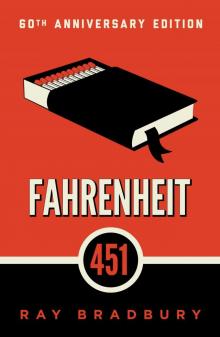 Fahrenheit 451
Fahrenheit 451 Zen in the Art of Writing
Zen in the Art of Writing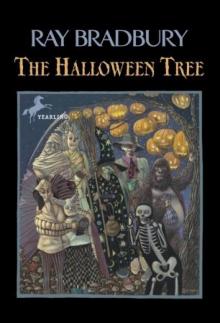 The Halloween Tree
The Halloween Tree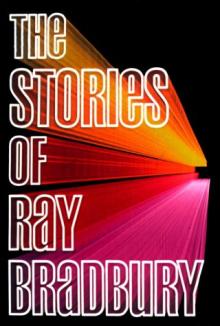 The Stories of Ray Bradbury
The Stories of Ray Bradbury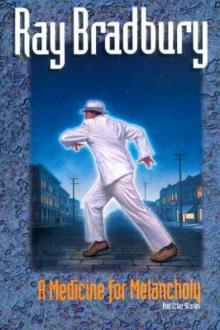 A Medicine for Melancholy and Other Stories
A Medicine for Melancholy and Other Stories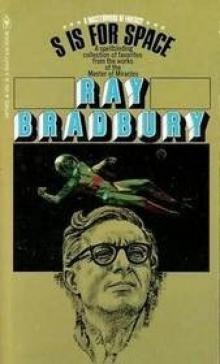 S Is for Space
S Is for Space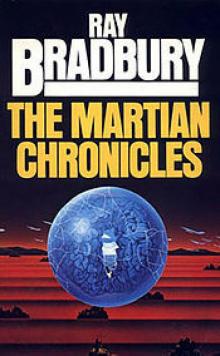 The Martian Chronicles
The Martian Chronicles Futuria Fantasia, Winter 1940
Futuria Fantasia, Winter 1940 Farewell Summer
Farewell Summer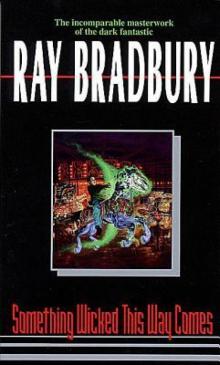 Something Wicked This Way Comes
Something Wicked This Way Comes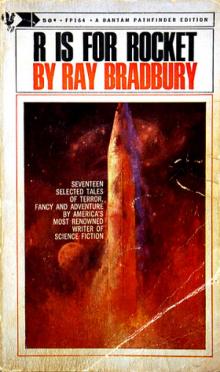 R Is for Rocket
R Is for Rocket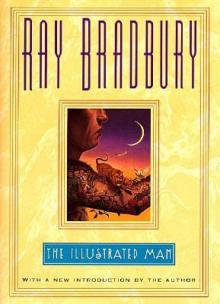 The Illustrated Man
The Illustrated Man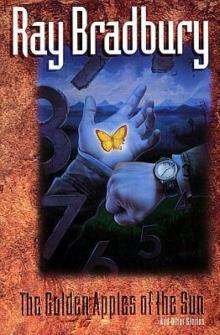 The Golden Apples of the Sun
The Golden Apples of the Sun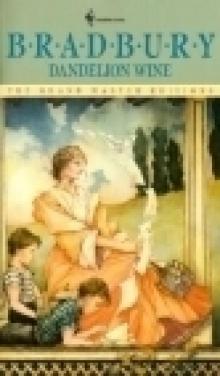 Dandelion Wine
Dandelion Wine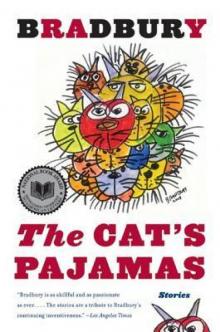 The Cat's Pajamas
The Cat's Pajamas A Graveyard for Lunatics
A Graveyard for Lunatics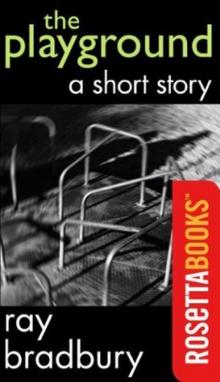 The Playground
The Playground We'll Always Have Paris: Stories
We'll Always Have Paris: Stories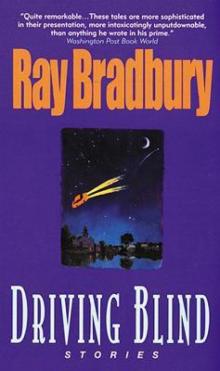 Driving Blind
Driving Blind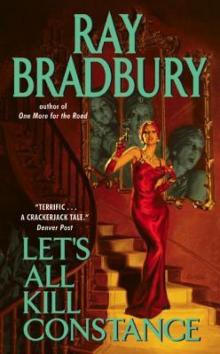 Let's All Kill Constance
Let's All Kill Constance The Day It Rained Forever
The Day It Rained Forever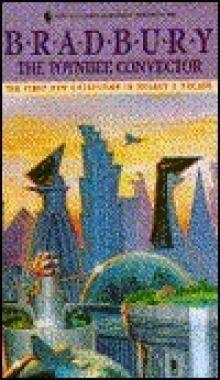 The Toynbee Convector
The Toynbee Convector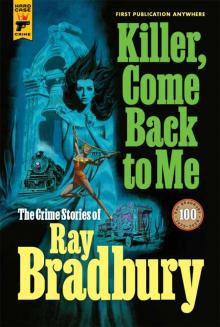 Killer, Come Back to Me
Killer, Come Back to Me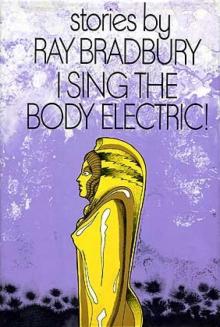 I Sing the Body Electric
I Sing the Body Electric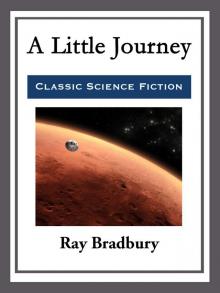 A Little Journey
A Little Journey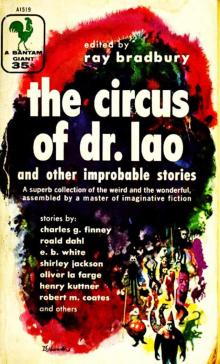 The Circus of Dr Lao and Other Improbable Stories
The Circus of Dr Lao and Other Improbable Stories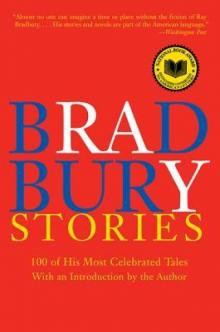 Bradbury Stories: 100 of His Most Celebrated Tales
Bradbury Stories: 100 of His Most Celebrated Tales From the Dust Returned
From the Dust Returned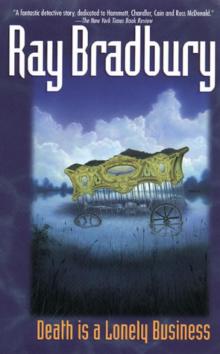 Death Is a Lonely Business
Death Is a Lonely Business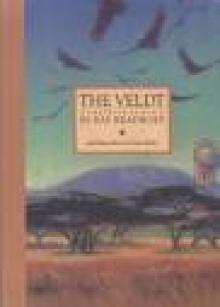 THE VELDT
THE VELDT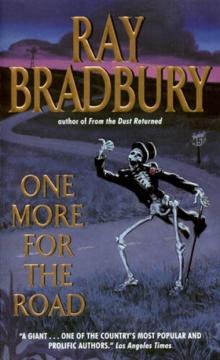 One More for the Road
One More for the Road Futuria Fantasia, Summer 1939
Futuria Fantasia, Summer 1939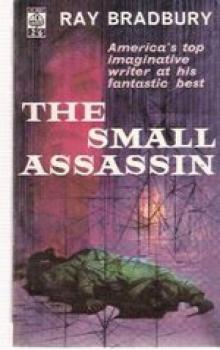 The Small Assassin
The Small Assassin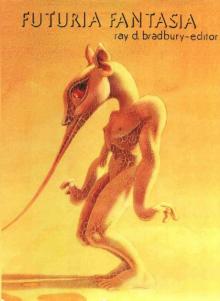 Futuria Fantasia, Fall 1939
Futuria Fantasia, Fall 1939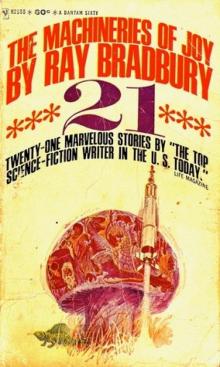 Machineries of Joy
Machineries of Joy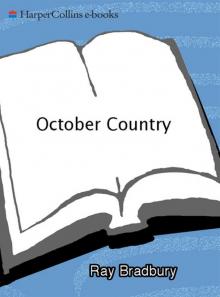 The October Country
The October Country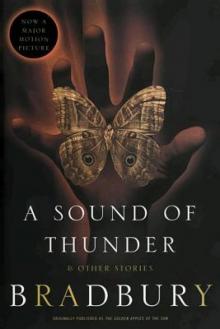 A Sound of Thunder and Other Stories
A Sound of Thunder and Other Stories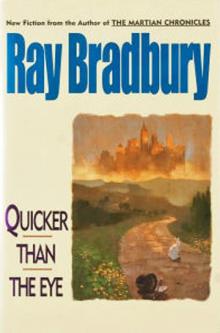 Quicker Than the Eye
Quicker Than the Eye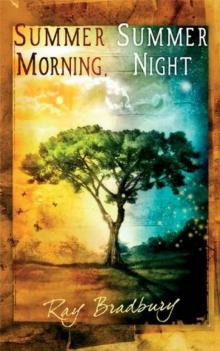 Summer Morning, Summer Night
Summer Morning, Summer Night Yestermorrow
Yestermorrow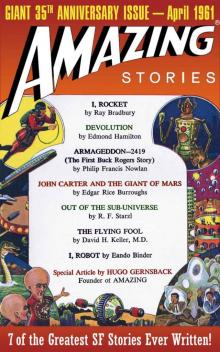 Amazing Stories: Giant 35th Anniversary Issue (Amazing Stories Classics)
Amazing Stories: Giant 35th Anniversary Issue (Amazing Stories Classics)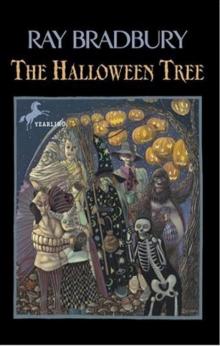 (1972) The Halloween Tree
(1972) The Halloween Tree Listen to the Echoes
Listen to the Echoes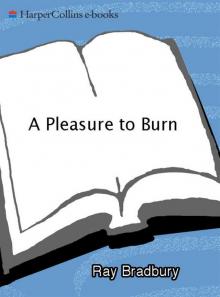 A Pleasure to Burn
A Pleasure to Burn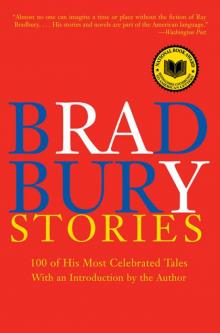 Bradbury Stories
Bradbury Stories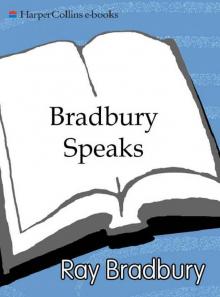 Bradbury Speaks
Bradbury Speaks Ray Bradbury Stories Volume 2
Ray Bradbury Stories Volume 2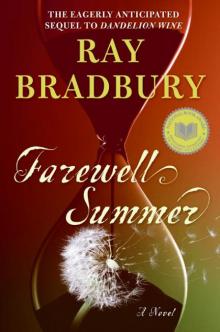 Farewell Summer gt-2
Farewell Summer gt-2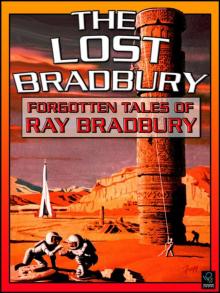 The Lost Bradbury
The Lost Bradbury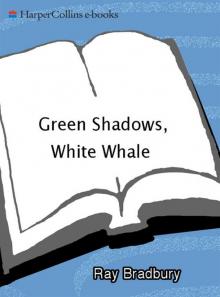 Green Shadows, White Whale
Green Shadows, White Whale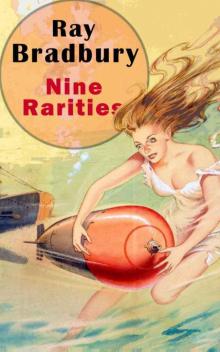 Nine Rarities
Nine Rarities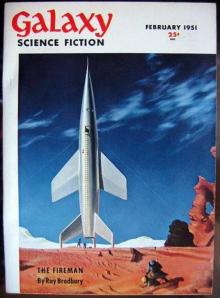 The Fireman
The Fireman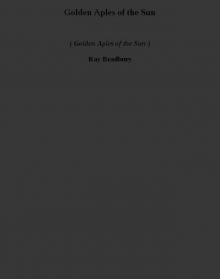 Golden Aples of the Sun (golden aples of the sun)
Golden Aples of the Sun (golden aples of the sun)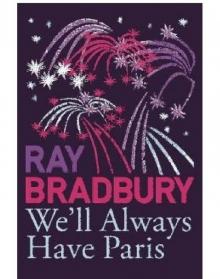 We'll Always Have Paris
We'll Always Have Paris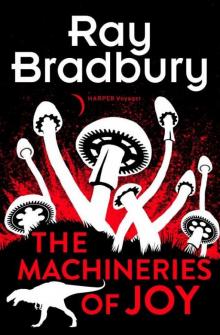 The Machineries of Joy
The Machineries of Joy A Graveyard for Lunatics cm-2
A Graveyard for Lunatics cm-2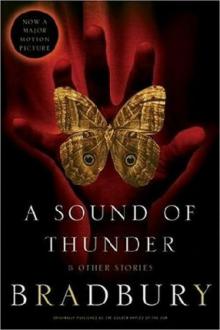 The Sound of Thunder
The Sound of Thunder Where Robot Mice and Robot Men Run Round In Robot Towns
Where Robot Mice and Robot Men Run Round In Robot Towns